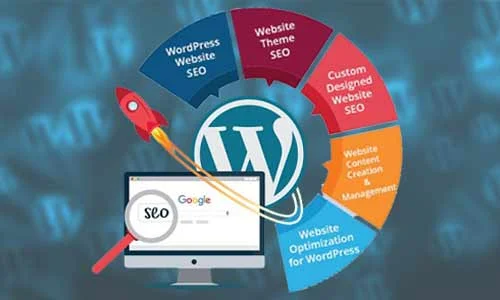Introduction
Fleet vehicles are a significant investment for any business. Prolonging their lifespan not only saves money but also ensures uninterrupted operations. In this comprehensive guide, we unveil the secrets to extending the lifespan of your fleet vehicles. Drawing from industry expertise and real-world experience, we’ll explore strategies, maintenance tips, and innovative solutions to keep your fleet on the road longer.
The Importance of Regular Maintenance
Scheduled Maintenance Checks
Regular maintenance checks, facilitated by a fleet management system, are the cornerstone of fleet longevity. Ensure your vehicles undergo routine inspections, oil changes, and fluid top-offs according to the manufacturer’s recommendations. This integrated approach ensures that your fleet stays in optimal condition, reducing the risk of unexpected breakdowns and extending the lifespan of your vehicles.
Preventive Repairs
Addressing minor issues promptly can prevent them from turning into costly repairs. A squeaky brake pad today can become a brake replacement tomorrow.
Professional Servicing
Entrust your fleet vehicles to qualified mechanics who specialize in commercial vehicles. They understand the unique demands of fleet maintenance.
Optimal Driving Practices
Defensive Driving
Promote defensive driving techniques among your fleet drivers. Defensive driving reduces wear and tear, extends vehicle life, and enhances safety.
Avoiding Excessive Idling
Excessive idling wastes fuel and puts unnecessary stress on the engine. Encourage drivers to turn off their engines when parked for extended periods.
Proper Loading and Weight Distribution
Overloading can strain the vehicle’s suspension and engine. Ensure that cargo is loaded evenly and within the recommended weight limits.
Invest in Quality Parts and Components
Genuine OEM Parts
Using genuine Original Equipment Manufacturer (OEM) parts ensures compatibility and reliability. They may cost more upfront but pay off in the long run.
Quality Tires
Invest in high-quality tires suitable for your fleet’s needs. Properly inflated and balanced tires improve fuel efficiency and reduce wear.
Embrace Technology
Telematics Systems
Telematics technology systems provide real-time data on vehicle performance, allowing for proactive maintenance and optimizing routes.
GPS Tracking
GPS tracking helps monitor driver behavior and location, reducing unauthorized vehicle use and improving overall efficiency.
Fleet Management Software
Fleet management software streamlines operations, helping you track maintenance schedules, fuel consumption, and driver performance.
Fuel Efficiency Strategies
Fuel-Efficient Driving
Encourage drivers to adopt fuel-efficient driving practices, such as gentle acceleration and avoiding aggressive braking.
Fuel Card Programs
Implement fuel card programs to track fuel expenses and identify cost-saving opportunities.
Alternative Fuels
Consider alternative fuels like compressed natural gas (CNG) or propane, which can be more cost-effective and environmentally friendly.
Weather and Environmental Considerations
Weatherproofing
Protect vehicles from harsh weather conditions with appropriate storage and maintenance practices.
Rust Prevention
Regularly inspect for rust and corrosion, especially in regions with salted roads during winter.
Extending Engine Life
Regular Oil Changes
Frequent oil changes are crucial for engine health. Fresh oil lubricates moving parts, reducing friction and wear.
Coolant Maintenance
Maintaining the right coolant levels prevents engine overheating, which can cause significant damage.
Air Filter Replacement
Clean air filters ensure proper air intake, optimizing combustion and reducing engine strain.
Transmission Care
Transmission Fluid Checks
Regularly check and change transmission fluid to ensure smooth gear shifting and prevent transmission damage.
Avoid Overloading
Overloading can strain the transmission. Ensure that vehicles stay within recommended weight limits.
Shift Gears Mindfully
Encourage drivers to shift gears smoothly to avoid undue stress on the transmission.
Brake System Maintenance
Brake Inspections
Regular brake inspections prevent brake pad wear and costly replacements.
Avoid Aggressive Braking
Aggressive braking causes brake pad and rotor wear. Encourage gradual, controlled braking.
Educate on Downshifting
Teach drivers to downshift when slowing down, reducing reliance on the brakes.
Suspension and Steering
Regular Suspension Checks
Check suspension components to maintain ride quality and ensure even tire wear.
Proper Tire Inflation
Inadequate tire pressure affects suspension and steering. Maintain proper inflation levels.
Educate on Pothole Avoidance
Avoiding potholes reduces stress on suspension components.
Electrical System Maintenance
Battery Care
Regularly check and maintain batteries to prevent breakdowns and avoid downtime.
Alternator Checks
Ensure alternators are functioning correctly to avoid electrical system failures.
Avoid Excessive Electrical Load
Minimize the use of auxiliary electrical equipment to reduce strain on the system.
Interior and Exterior Care
Cleanliness
Clean vehicles regularly to prevent dirt and debris from causing damage.
Interior Protection
Use seat covers and floor mats to protect the interior from wear and tear.
Exterior Waxing
Waxing vehicles provide a protective layer against environmental elements.
Training and Education
Driver Training Programs
Implement driver training programs to educate on proper vehicle maintenance and driving practices.
Maintenance Logs
Encourage drivers to maintain detailed maintenance logs to track vehicle history.
Maintenance Seminars
Host seminars to keep drivers informed about best practices and updates in vehicle maintenance.
Fleet Management Software
Maintenance Scheduling
Use fleet management software to schedule maintenance checks and reminders.
Data Analysis
Analyze data to identify trends, such as vehicles requiring frequent repairs.
Predictive Maintenance
Leverage software for predictive maintenance, reducing unexpected breakdowns.
Environmentally Friendly Practices
Eco-Friendly Driving
Promote eco-friendly driving practices to reduce emissions and fuel consumption.
Green Fleet Options
Consider hybrid or electric vehicles for a more sustainable fleet.
Recycling and Disposal
Dispose of old parts and vehicles responsibly, contributing to a cleaner environment.
Preventing Corrosion
Salt and Corrosion Protection
In regions with salted roads, wash and protect vehicles to prevent corrosion.
Rust Prevention Coatings
Apply rust prevention coatings to vulnerable areas like undercarriages.
Regular Inspections
Regularly inspect vehicles for signs of rust or corrosion.
Employee Engagement
Employee Feedback
Encourage feedback from drivers on vehicle performance and issues.
Recognition Programs
Reward employees for maintaining vehicles well and following best practices.
Open Communication
Maintain open channels of communication between management and drivers regarding maintenance concerns.
Conclusion
Extending the lifespan of your fleet vehicles requires a multifaceted approach, from regular maintenance to adopting fuel-efficient driving practices and leveraging technology. By implementing these strategies and embracing the importance of quality and preventive measures, you can optimize your fleet’s longevity, reduce costs, and ensure reliable performance for years to come.
FAQs (Frequently Asked Questions)
Q: What’s the secret to extending the lifespan of fleet vehicles?
A: Regular maintenance, optimal driving practices, investing in quality parts, embracing technology, fuel efficiency strategies, and weather considerations are key factors.
Q: How often should fleet vehicles undergo maintenance checks?
A: Fleet vehicles should undergo scheduled maintenance checks as recommended by the manufacturer, typically every 5,000 to 7,500 miles.
Q: Are genuine OEM parts worth the investment?
A: Yes, genuine OEM parts ensure compatibility and reliability, ultimately saving money on repairs in the long term.
Q: What is telematics, and how does it benefit fleet management?
A: Telematics systems provide real-time vehicle data, allowing for proactive maintenance, optimized routes, and improved efficiency.
Q: How can I improve fuel efficiency in my fleet?
A: Encourage fuel-efficient driving practices, consider alternative fuels, and implement fuel card programs to track and reduce fuel expenses.
Q: What steps can I take to protect fleet vehicles from harsh weather conditions?
A: Weatherproofing, rust prevention, and proper storage practices help protect vehicles from environmental damage.





